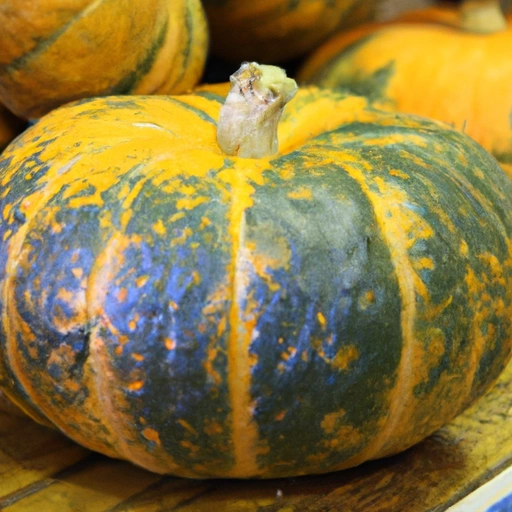Kabocha Squash
Description

Kabocha squash, also known as Japanese pumpkin, is a popular variety of winter squash that has a sweet, nutty flavor reminiscent of sweet potatoes and pumpkin. This stout, green-skinned squash typically has a round shape and a squat appearance with a deep orange flesh inside. It's appreciated for its dense texture, making it ideal for a variety of culinary applications. In recipes, the kabocha is often measured in cups (US), grams (metric), or ounces (imperial).
Common uses
Kabocha squash is commonly used to make soups, stews, purees, and desserts. It can also be roasted, baked, or steamed and is a frequent ingredient in tempura. The squash's edible skin becomes tender when cooked, adding a pleasant texture to dishes.
Nutritional value
Calories
One cup of cooked kabocha (about 245 grams) contains approximately 49 calories.
Protein
Each cup provides around 1.8 grams of protein.
Fat
Kabocha squash is low in fat, with less than 0.2 grams per cup.
Carbohydrates
It is a good source of carbohydrates, with about 12 grams per cup.
Vitamins
Kabocha is rich in vitamin A, providing over 70% of the daily value in one cup. It also contains vitamin C and some B-vitamins.
Minerals
Important minerals found in kabocha include potassium, with one cup yielding around 564 milligrams, as well as smaller amounts of magnesium and iron.
Health benefits
Kabocha squash is celebrated for its high beta-carotene content, which is a precursor to vitamin A, an essential nutrient for eye health. The fiber content aids digestion, while the low-calorie count makes it a favorable choice for weight management. Additionally, its antioxidants may help reduce inflammation and support overall health.
Potential risks
For individuals with specific dietary restrictions or those taking certain medications, the high potassium content may need to be monitored. Additionally, the squash's hard skin can be difficult to cut, posing a risk for injury if not handled carefully.
Common recipes
The versatility of kabocha squash lends itself to a variety of recipes, from creamy soups and hearty stews to sweet pies and tarts. It's also used in curries and can be a substitute for other squashes or root vegetables.
Cooking methods
Kabocha can be roasted at 400°F (about 204°C) or steamed until tender. It can also be microwaved or sauteed, depending on the recipe.
Pairing with other ingredients
This squash pairs well with spices such as cinnamon and nutmeg, as well as savory herbs like sage and thyme. It complements ingredients like coconut milk, apples, and lentils.
Summary
Kabocha squash is a nutritious and flavorful ingredient that can be used in a myriad of dishes across various cuisines. Its sweet taste and velvety texture make it a beloved choice for both sweet and savory recipes, and its health benefits further enhance its appeal in a balanced diet.